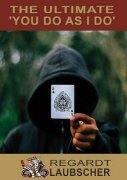Cards in Magic & Conjuring: page 106
Subtopics
Self-Working or Sleightless DIY Playing Cards Moves ACAAN Stacks Marked Rising & Levitating Gaffed Manipulation & XCM Svengali Torn and Restored LinkingAuthors
Products
| Sort by: Product Name- Author | Listed | Price |
The Whispering SpiritBob Hummer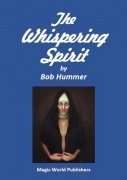 An entertaining mental feat with a borrowed deck of cards. From the brilliant mind of Bob Hummer comes a divination mystery that seems impossible, yet you do it every time. The performer takes the spectator on an adventure with a borrowed deck and a dead person's age (which is furnished by anyone in the room). In some uncanny manner, the "Whispering Spirit" aids the performer in solving the mystery. The performer does not need to touch the deck while they are in the spectator's hands. There are no setups, stacks or cyclical rotations. The cards may be borrowed. The cards are not marked.... | ★★★★★ $4 to wish list | |
The Wave of the HandJ. Stewart Smith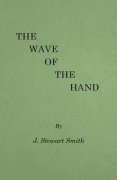 J. Stewart Smith's third book on card magic, containing six more card masterpieces. Like his previous releases, all the work is accomplished without knuckle-busting sleight of hand. Only a few simple moves are necessary, easily within the grasp of the average magician. PARTIAL CONTENTS:
Card workers the world over praise his beautiful effects and their methods. See below for a few brief quotes from experts in the field.
| $8 to wish list | |
The Wandering QueensDevin Knight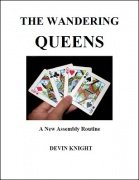 A card trick that is flashy and plays big, it is suitable for parlor or stage and requires no skill. Four Queens are each seen in four glass tumblers facing outward. Each Queen is then turned back outward and returned to its glass. Three indifferent cards are placed in each glass with the first three Queens. The fourth Queen is left by herself in the fourth glass. The performer waves his hands and the magic happens. The cards are removed from the first glass. There are only three cards, the Queen has vanished. This is repeated with the next two glasses. Finally, the card is removed from... | ★★★★★ $3 to wish list | |
The Vortex Principle: and other madnessesAvik Dutta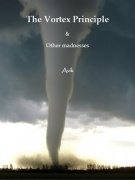 Fresh from the success of his Confession and Oblivion manuscripts, Avik is back, this time with a short treatise on cards. The star of this show is his 'Vortex principle' - a method for covertly spotting and controlling multiple cards from a fairly shuffled deck. One could describe it as a 'control in stages', because it is not one single movement you do to control a card. It is something you do while you casually shuffle your cards. Next, comes an effect called "Any Card at Any Name", which employs an age-old principle to powerful effect. The central section of the manuscript details 'The Narcissus... | $16 to wish list | |
The Vortex CardsStephen Tucker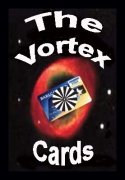 Two full-color laminated Visa-type credit cards are shown. As you hold one, and move it in a circle, the image of a silver coin appears at its center, which (incredible as it sounds) you then shake off into reality! You then explain that it can just as easily be deposited back into your bank-account and removed whenever you want it. Once you've produced several coins, you can use the two Vortex Cards as covers for your favorite matrix routine. Stephen includes his Vortex-Matrix routine. This is an optical oddity that you will love and use! Pop the two Vortex Cards in your wallet and... | $12 to wish list | |
The VisitationDavid Devlin This came about thanks to Larry Jennings' classic effect, "The Visitor". David has always loved that effect. It is impromptu, there is no setup, a borrowed deck can be used, and the effect is stunning. One day, David was playing with the routine, and began to think along the lines of, "Wouldn't it be cool if the selected card could be seen the entire time? What if the spectator could see their card sitting between the two face down cards right up until the very moment that it vanishes?" The answers, of course, are yes! Of course it would be cool. And with The Visitation these things are possible! Here is... | $6 to wish list | |
The Unusual SuspectsBiagio Fasano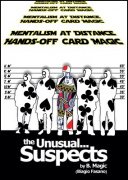 How to find the guilty card despite a possible reticent witness! An effect of mentalism, possible from a distance (in a video chat or even just on the phone), whose story is very loosely inspired by the movie "The Unusual Suspects" and in which the spectator is asked to choose five random cards from the deck. They will represent the suspects of a major bank robbery. Only one will be the real culprit. Despite the free arrangement of the cards and the various shuffles of face-up and face-down cards, in the end the mentalist will always succeed to guess all of these:
| $10 to wish list | |
The UntouchablesDavid Devlin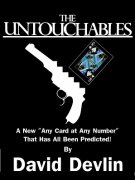 This is a new Any Card at Any Number effect in which (apparently) the spectator does all of the work, and it happens all in his hands. Not only that, but the performer has predicted the entire outcome; the card and the number, far in advance! This is all true. The performer never touches the deck once the effect begins. Here is the effect as the audience sees it: The deck is shuffled by a spectator. The performer has any spectator think of any number between one and fifty-two, but not to reveal it to anyone until asked by the performer. Nothing is written down. The number is simply thought... | ★★★★★ $12.50 to wish list | |
The Unplanned Card BookPaul Gordon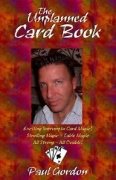 An ebook of 56 late extra, new (and previously unpublished), unusual, unplanned but darned-good card tricks! Paul Gordon doesn't (often) use fakes, extra cards, big set-ups and/or angley moves. And, he doesn't use second deals, bottom deals ...
| ★★★★★ $19.50 to wish list | |
The Unkindest CutBrick Tilley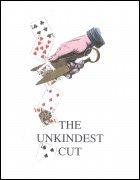 A false cut that uses the action of burning a card as misdirection. Particularly useful for cheating at BlackJack. Chuck Smith was recorded doing this cut. (A letter from Chuck Smith to Brick Tilley is reproduced in the PDF.) He used it to beat players during the years of WWII. The sequence of actions is the following. You first openly cut the cards and complete the cut. Then you take the top card, turn it face up and place it as the bottom card. During the action of burning the top card you undo the cut. The demo video will prove how honest and fair this looks. You will receive a PDF... | $30 to wish listPDF & MP4 | |
The Universal Card ExpandedJon Racherbaumer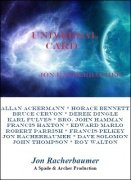 More than 40 years ago Jon Racherbaumer wrote a book on the Universal Card plot introduced by Karl Fulves. This is an updated and expanded version.
| ★★★★★ $10 to wish list | |
The Universal CardJon Racherbaumer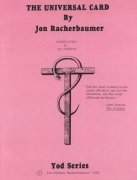 This ebook explores variations on the Universal Card theme, is part of the Yod series. Universal Card is a classic card plot in which a single card (like the joker) transforms to one at a time to match each of the selected cards. Originally posed by Karl Fulves in his Pallbearers Review, where he used the term "Universal Card", a name that caught on.
| ★★★★★ $6 to wish list | |
The Ultimate Magic Square (That's Magic)Chris Wasshuber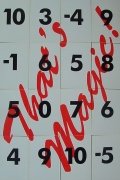 A spectator is asked to throw three fair dice (this is an absolute fair throw or even just a mental throw - no force here). From the number fairly thrown you construct a perfect magic square. For a kicker, the cards are put together and a message appears written on the cards: "That's Magic!". You get 16... | ★★★★★ $10 more than onetype to choose from printed cards | |
The Ultimate Magic Square (King of Hearts)Chris Wasshuber
A spectator is asked to throw three fair dice (this is an absolute fair throw or even just a mental throw - no force here). From the number fairly thrown you construct a perfect magic square. For a kicker, the cards are put together and the face of a King of Hearts appears. There is no palming of cards or exchanging of decks or anything like it. You work with 16 cards and 16 cards only without any sleight-of-hand. You get 16 specially printed cards... | ★★★★★ $15 more than onetype to choose from printed cards | |
The Ultimate Faulty FollowerAldo Colombini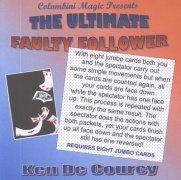 An effect by Ken de Courcy. Performed by Aldo Colombini. A terrific three-phase routine with jumbo cards. Having enticed a spectator up to help, you hand him eight jumbo cards and say, "Please give me any four and keep four yourself." This done, both you and the spectator carry out some simple movements but when the cards are counted again, all your cards are face down while the spectator has one face up. This process is repeated with exactly the same result. There is obviously only one answer; the spectator will have to do the actions with both packets. He does so, yet your cards finish up all face down... | $10 to wish listMP4 (video) | |
The Ultimate 'You Do As I Do'Regardt Laubscher | ★★★★★ $5 to wish list | |
The Twelve Card ProblemScott Baird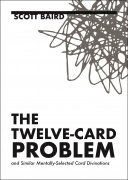 After explaining his effect 3H in his ebook More Plots and Methods (2021, p.25), Michal Kociołek writes: Here's a little dare. I invite you, the reader, to solve this little card "problem": Perform this trick, but just with twelve cards. Once you have a method, please reach out to me as I'm very curious about your approach (unless you're reading this in 2077, then I'm definitely dead so don't bother). This ebook contains my solutions to his challenge. The routines range from impromptu to stacked, though the majority of the effects can be done with a borrowed deck of cards and no preparation. Those... | $14.50 to wish list | |
The Turnstile PassIan Baxter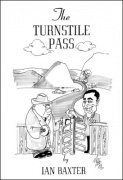 It was none other than Channing Pollock who stepped forward with this keen endorsement of Ian Baxter's The Turnstile Pass: "Beautifully written and detailed. Yes, I recommend it! And - I just love your self-deprecating humor." A smooth card pass that enunciates the importance of using a distractive move to cover the mechanics. Three first rate effects are included as well. The Turnstile Pass is Ian Baxter's variation of a Hermann style pass that does not require a turnover of the packet, as is typically the case with Hermann type passes. As a bonus you will get three routines using this pass: ... | ★★★★★ $7 to wish list | |
The TripleCameron Francis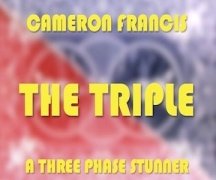
Three amazing effects. One professional grade routine... This is The Triple. If Triumph, The Collectors, and a color changing deck effect all got together and had a baby, it might just look something like The Triple. Cameron Francis delivers another knockout multi-phase card routine that's truly amazing to witness but devilishly simple to execute. No gimmicks. No difficult sleight of hand. Just a truckload of powerhouse magic. Perfect for the professional... | ★★★★★ $10 to wish listMP4 (video) | |
The TournamentDavid Devlin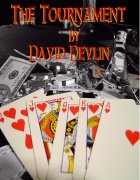 This is a card act rather than a single trick. It is a full-deck effect, tells a story, has audience participation as spectators become the characters, is full of magic, and has an ending that no one will see coming that will fry the audience. It is called, The Tournament, and it will convince your audiences that you are the greatest card cheat of all-time. There is no false dealing, which means that the dealing portions of this routine are all self-working. The finale of the act is a mind-blower and brings everything to a logical conclusion. Two methods are provided, one which utilizes the... | $15 to wish list | |
The Three Card Monte as Entertainment: Teach-InLewis Ganson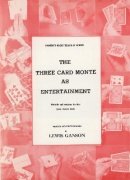 This was the publication that taught me the Three Card Monte many years ago. It has all you ever need on this wonderful performance piece - and then some. Erdnase writes in Expert at the Card Table: "There is not a single card feat in the whole calendar that will give as good returns for the amount of practice required, or that will mystify as greatly, or cause as much amusement, or bear as much repetition as this little game! Vernon performed it reciting: "A little game from Hanky Poo, the black for me, the red for you - all you have to do is to keep your eyes on the little lady - ten gets you twenty - twenty... | ★★★★★ $9.50 to wish list | |
The Third EyeDavide Rubat Remond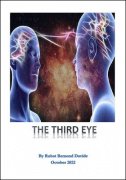 I started from Karl Fulves' idea called "Voodoo Cards", published on pp. 588-589 of The Pallbearers Review, Vol. 5-8 (November 1969 - October 1973), where a series of five effects proposed as bets are described, with the use of only three cards or tickets written on the spot. Always winning bets and of immediate revelation at first glance, also considering the fact that there are very few elements at stake and the (perceived) probability of success is 50%. I propose an evolution of Fulves' work with three effects based on the same kind of principle, characterized by an apparent increasing difficulty,... | $10 to wish list | |
The Third EcstasyAl Mann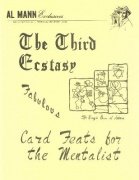 Card feats for the mentalist. This book has 14 effects that Al Mann judged sufficiently amazing enough, and plotted well enugh, as to be suitable for the mentalist to perform. Also incuded is a chapter of Olof Jonsson’s card mentalism stunts, 9 total, with full methedology. Jonsson was the Uri Geller of his day, so these additional 9 effects are also excellent fodder for the Mentalism show. The Contents:
| $10 to wish list | |
The Svengali Pitchman's HandbookSeth Briliant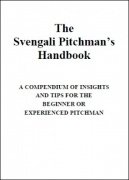 Twenty-five pages of previously unpublished information on successful pitching – tips, ideas, and insights from highly experienced pitchmen. What to wear, details on the joint, and more. A valuable addition to the Don Driver Svengali DVD on pitching the Svengali and the Don Driver Interview. 1st edition 2009, PDF 25 pages. | ★★★★★ $20 to wish list |
